Maori Magic – Explore New Zealand’s Native Culture with Thomas Cook
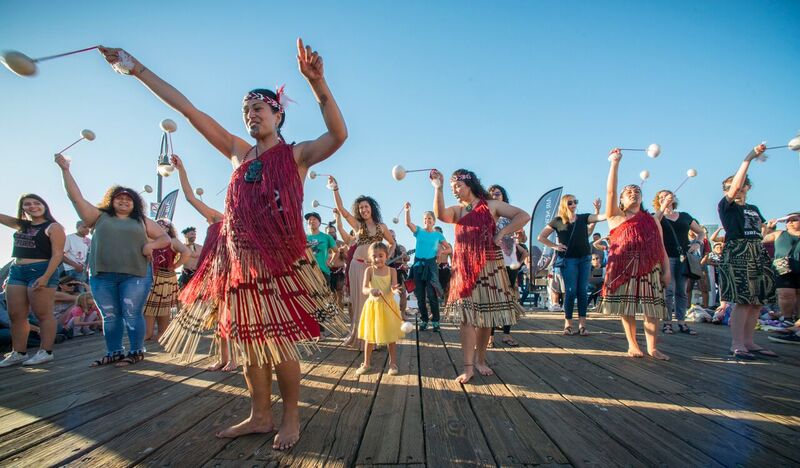
The year is 1320… a waka (canoe) drifts towards the shores of New Zealand, carrying settlers from Polynesia. Not just a single boat, but wave after wave of canoes that travelled the waters between Polynesia and New Zealand for over 3 decades. This is a story that crosses many centuries. The settlers who landed in this beautiful country, lived in isolation from the rest of the world. They created their own language, their own traditions and their own customs.
So, you say, 1320 was a long time ago. What does that have to do with any of us?
Everything, if you’re planning a vacation to New Zealand. The indigenous people of New Zealand – Maoris – whose stories on this land began with one waka, continue to inhabit, thrive and take care of the land to this day. Visiting New Zealand, without learning about or immersing yourself in this culture would be like biting into a kiwi fruit and tasting none of its sweetness. Let us show you. We’ve put together some traditions of the Maori lifestyle, which you’ll get to experience in our New Zealand Holiday packages. So, just like the Maoris did years ago, let’s go in search of a new land and a different way of life.
Ta Moko
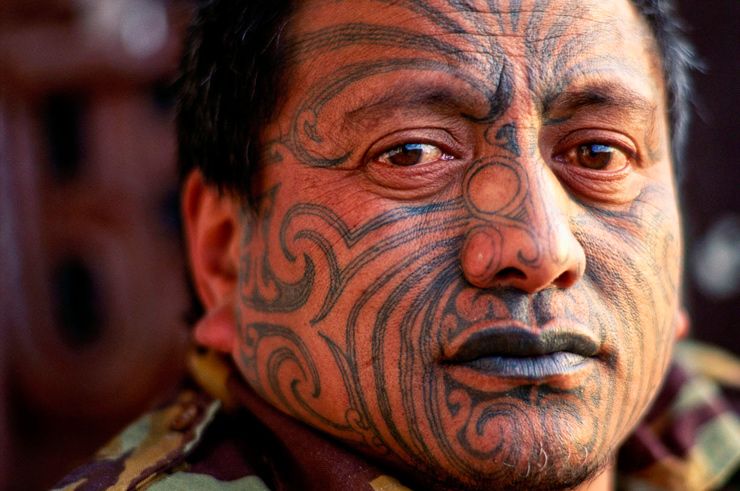
Our faces often tell stories without saying a word. The lines on our skin, our expression, the curve of the mouth – all express what words can’t say. The Maori’s understand this more than others. They express the story of their lives on their faces, through Ta Moko.
This is one of the most well-known Maori traditions – tattooing. Intricate designs, patterns and motifs that are tattooed on the Maori’s faces and heads. The tattoos not only speak of that individual’s life, it also signifies their social status, speaks of their knowledge, and is completely unique. No tattoos are alike – these are deeply personal stories. Men tattoo them on their faces and thighs, while women tattoo their lips and chin. The face and head are considered sacred parts of the body. Originally, the tattoos were inked on the skin with a shark’s tooth or sharp bone, which was covered in ink and tapped against the skin.
You can see traditional Ta Moko ceremonies performed at the Bay of Islands, where many locals sport their inked stories with pride.
Suggested Read : 26 facts about New Zealand that will blow your mind away!
Hongi, Maori Way Of Greeting People
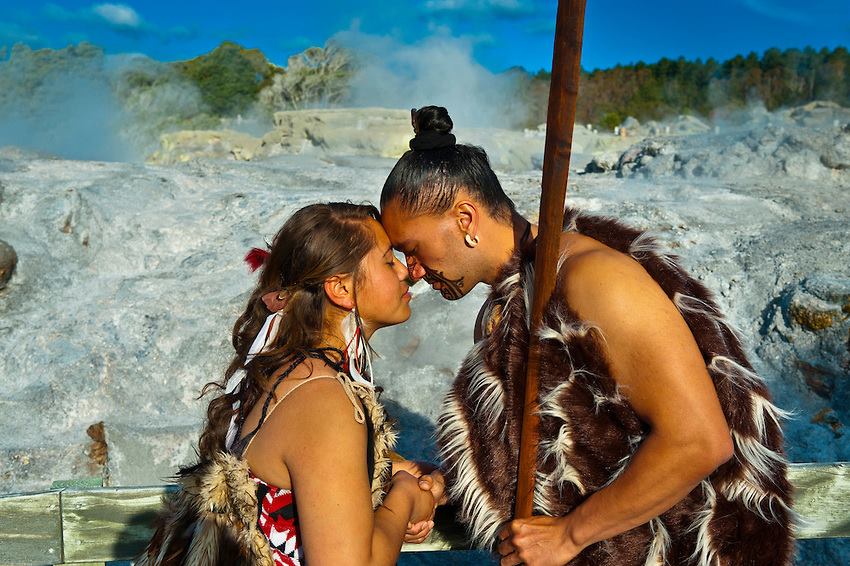
Tilt your body forward, just as a native Maori does and let your forehead and nose press against theirs. Now close your eyes and breathe deeply. You have just performed the traditional “Breath of Life” ceremony. This is the way to greet a member of the Maori community. The tradition originated from the story of Hineahuone – the first earthly Maori woman. She was made from clay, and only came to life when Tane (the god of forests and birds) breathed life into her through her nostrils.
You can practice this greeting before you try it with a native Maori. It’s a sweet and intimate way to break the ice and honour the traditions of the natives of New Zealand.
Haka
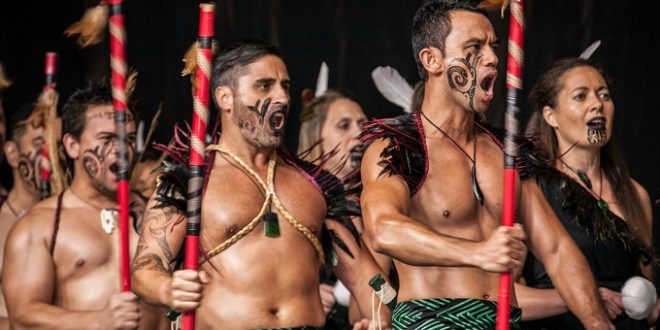
Ready to challenge someone? To announce your intentions to fight? Well, then consider the Maori Haka. A ceremonial dance or challenge, performed by a group using vigorous stamping of the feet, sharp movements and rhythmic shouts. Traditionally, this practice was associated with warriors. Both men and women perform the Haka. While the dance is considered a challenge, it can also be used to welcome distinguished guests, herald a great achievement in the community, motivate a community member or be part of a funeral.
You can watch these incredible performances at Rotorua, especially the Maori village in the area. On a larger scale, the Haka is performed by many national sports teams, like the All Blacks rugby team.
Must Read : Top 10 Places To Visit In New Zealand – The Land Of Kiwis
Whakairo : Maori’s Beautiful Art of Carving
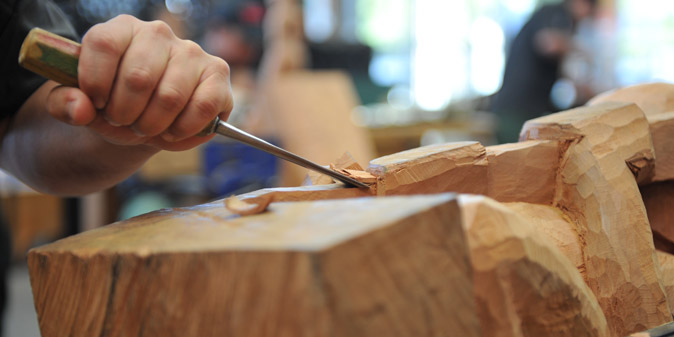
Sometimes a picture can say so much more than words. Whakairo – the Maori’s beautiful art of carving tells stories through wood, stone and bone. The carvings express the cultural history and personal allegories of the Maori community. These carvings display stories, which are passed down through the generations. Each tribe has a different style, different meanings and different stories to tell.
Rotorua boasts of beautiful carvings, and the village also has live demonstrations of artisans at work.
Hangi
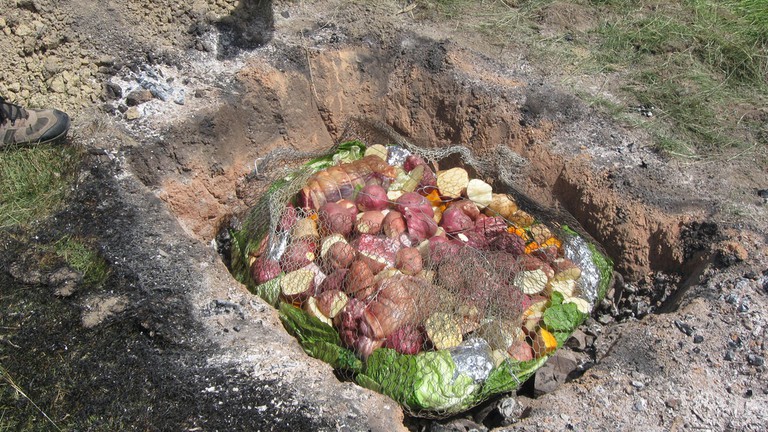
We often tell people to immerse themselves in a new culture. Sometimes though, the flavours of that culture must sink into you. When it comes to Maori food, one of the best examples is the Hangi method of cooking. This tradition, reserved for special occasions, involves digging a pit, filling it with hot stones, stacking baskets of starchy vegetables and meat on the stones and then covering the pit for hours to let the food cook. When the pit is uncovered, it unveils the roasted, toasted and tender flavours of Hangi cooking.
Rotorua invites tourists to join in a Hangi meal. If you have the opportunity to join, don’t sit this meal out. It’s a great way to bond with the community and enjoy some delicious food.
Pa
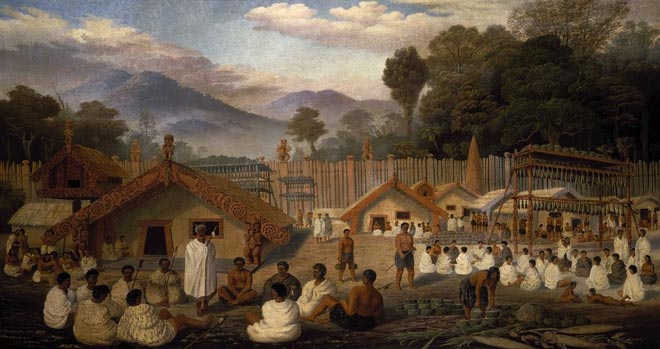
These are old and fortified Maori villages, constructed largely from wood and earth. Most were built on the slopes of hills, featured terraces and were fenced all around. Many Maoris visit these villages, as this was where their ancestors lived. While it’s true that not much of these villages remain, it’s still vital to understand the communities past.
You can visit these villages in Gisborne and Rotorua. In these areas, the Maori tourism community have remade these villagers to give tourists a better look at their heritage and past.
Recommended Read : 12 Most Exciting Things to do in New Zealand
Powhiri/ Pohiri

This isn’t your traditional greeting at the door. The Powhiri is a Maori welcoming ceremony involving speeches, singing, gestures, dancing and ends with the Hongi. This tradition is performed when welcoming tourists to the Marae (the community meeting grounds). You must show that you come in peace. Usually, this ceremony is performed to welcome dignitaries. If you do get a chance to be greeted this way though, absorb it. It speaks of the enduring nature of the Maori culture, while the fluidity, boldness and intricacy of the movement is a treat. For most tourists and non-Maori speakers, the performers might put on the Wero – a traditional Maori challenge. This spectacular ceremony will involve Maori warriors in a unique ritualistic dance. The ceremony winds down when the warrior accepts the Rautapu (a leaf or carved symbol) as an offering of peace. It’s a spectacular performance and vital slice of culture.
You may not be content with a simple “hello” after this.
You can be welcomed with the Powhiri at the Marae in Rotorua.
The Language
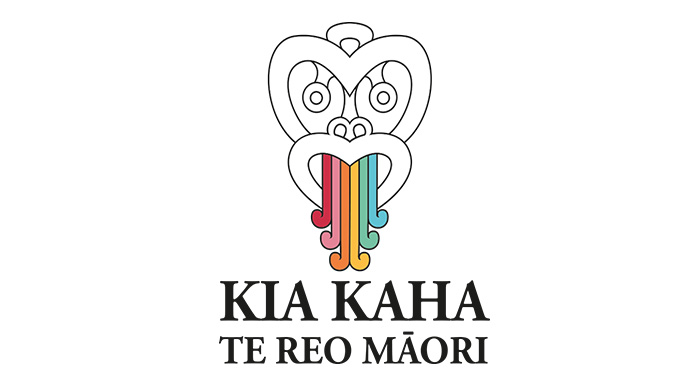
Maori’s express their earliest stories through their faces, their carvings, their storytellers for one very simple reason – before the European colonisers arrived, there was no written form of the language. Histories, stories, legends were passed on visually and orally. Each storyteller adds their own personality and style to the stories- adding so many shades to a single legend. Today, there is an official written form of the language – Te Reo Maori.
With some of the most delicious food, beautiful ceremonies and stories, Maori culture will have you spellbound. We, at Thomas Cook, know how important these moments are, and our packages are designed to give you a taste of Maori traditions when you’re in New Zealand. So, pack your bags and prepare yourself for some Maori magic.
